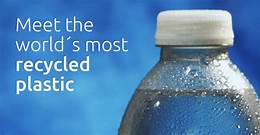What Does PET Mean on Plastic?
Polythene terephthalate (PET) is a thermoplastic polymer resin of the polyester family used in fibres for clothing, containers for liquids and foods, and thermoforming for manufacturing. It is commonly recycled, and has the number "1" as its resin identification code (RIC). PET is used for the production of synthetic fibres that are used to make clothing and other fabrics, especially fleece jackets, carpets, and bedspreads.

Uses of PET Plastic
1. Food and drink containers: PET plastic is commonly used in the manufacturing of food and drink containers, such as soda bottles, water bottles, and juice containers. This is because PET is lightweight, transparent, and has good barrier properties, which help to preserve the freshness and quality of the contents.
2. Packaging: PET plastic is also widely used in the packaging of various products, including cosmetics, pharmaceuticals, and household cleaning products. It is also used in the manufacturing of flexible films and sheets, which are used for wrapping and laminating purposes.
3. Clothing and textiles: PET plastic is commonly used in the production of synthetic fibres, such as polyester, which are used to make clothing, carpets, and other fabrics. Polyester is known for its strength, durability, and wrinkle resistance. It is also commonly used in the manufacturing of bed sheets, pillowcases, and other bedding products.
Advantages of PET Plastic
1. Lightweight: PET plastic is lightweight, which makes it a good option for packaging and containers. This lightness helps to reduce transportation costs and energy consumption.
2. Transparency: PET plastic is highly transparent, which allows consumers to see the contents of the packaging or container clearly. This transparency is important for products that need to be inspected visually, such as food and beverages.
3. Strength and durability: PET plastic is strong and durable, which makes it resistant to breakage and damage. This durability makes it suitable for use in a variety of applications, including packaging, containers, and textiles.
Disadvantages of PET Plastic
1. Non-biodegradable: PET plastic is not biodegradable, which means it does not decompose naturally in the environment. This can lead to accumulation of PET waste in landfills and the environment, contributing to plastic pollution.
2. Potential for leaching: PET plastic can leach chemicals, such as antimony and phthalates, into the contents of food and beverages. These chemicals can have adverse effects on human health, especially when exposed to heat or acidic conditions.
3. Limited recycling: PET plastic is recyclable, but the recycling process can be complex and expensive. This limited recycling can lead to a significant amount of PET waste ending up in landfills or the environment.
Declaration: All article resources on this website, unless otherwise specified or labeled, are collected from online resources. If the content on this website infringes on the legitimate rights and interests of the original author, you can contact this website to delete it.





